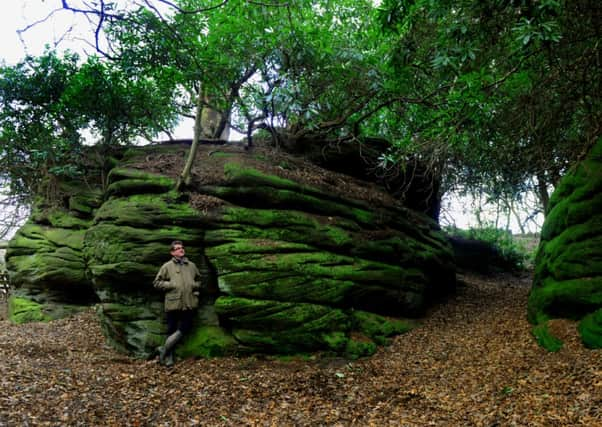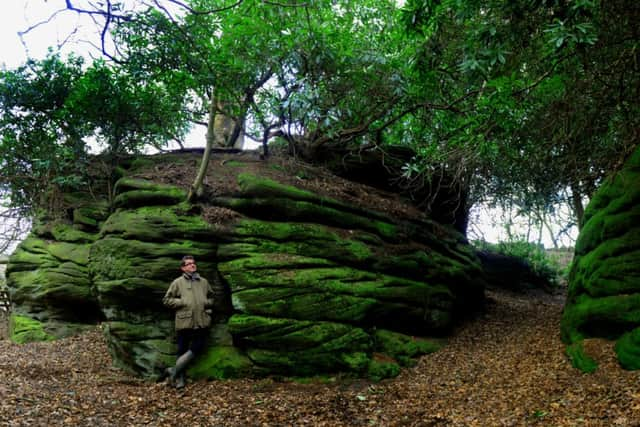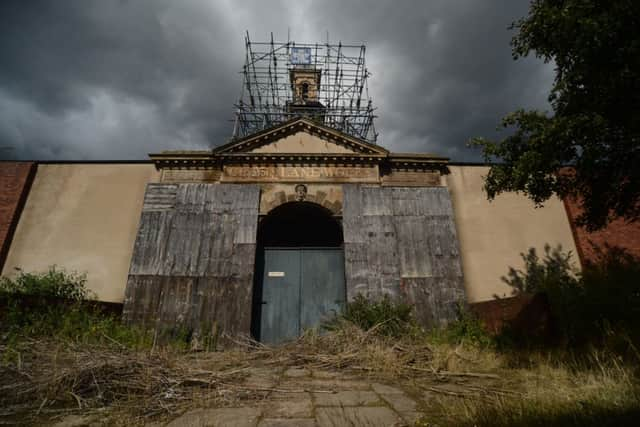Now at risk: Vista which inspired one of Turner’s paintings


The year was 1797 and the painter tasked with capturing the splendour of North Yorkshire’s Plumpton Rocks was a 22-year-old named Joseph Mallord William Turner. His fee - £32 for a pair.
What were the first commissioned landscapes in oils for the artist, now famous across the world, depicted the striking contrast of the towering rock face and the serene calm of the lake below.
Today, however, that famous view is markedly different.


Advertisement
Hide AdAdvertisement
Hide AdYears of silting up in the lake, and invasive Himalayan Balsam, have altered the landscape of the Knaresborough beauty spot, and experts say it is in decline. Official reports paint a bleak picture, stating the problems are “eroding the legibility of the park and affecting its significance.”
Owner Robert Hunter is determined to restore the grade II-listed pleasure gardens, built in the 1760s, to its former glory and keep the site open to the public.
The site passed through generations of his ancestors, the Plumptons, the earliest was Eldred de Plumpton, who held the manor at the time of the Domesday Book in 1086.
It later passed into the hands of Lord Harewood, but was bought back by Mr Hunter’s father, who married a Plumpton in his mother, in 1951.


Advertisement
Hide AdAdvertisement
Hide Ad“There is little doubt that my father’s purchase saved it from inappropriate development,” said Mr Hunter.
“Although the passage of time, two world wars and difficult economic periods have all played a part in Plumpton now requiring a significant capital investment to protect this precious and fragile landscape.
“Each generation has faced its challenges and mine is to restore the rocks to enable those who love this special place to continue to enjoy it for another 200 years.”
But with extensive work required, it is a huge undertaking, and the site, which was known as Plompton Rocks in its earlier decades, has already spent three years on the at-risk register.
Advertisement
Hide AdAdvertisement
Hide Ad“Over the years there has been a natural regeneration of trees and silting of the lake which means part of that famous Turner picture has changed,” said historic landscape expert Erika Diaz Peterson.
“It is starting to block the views of the north end of the lake. It’s still incredibly striking but work needs to be done to recover certain aspects of the landscape.”
The first stage of a sensitive tree removal plan begins soon, which will restore the Turner view and open up footpaths which have been lost under vegetation for many years. As a consequence it is likely to be closed until mid-April.
And there is much more to be done, alongside ongoing preservation, to ensure the Plumpton which became known as an ‘essential site for genteel folk’ in the 18th-century, described by Queen Mary as ‘heaven on earth’.
Advertisement
Hide AdAdvertisement
Hide AdIt is hoped that Give Our Past a Future will remind people and encourage them to discover the 30-acre parkland for themselves. Mr Hunter is also keen to enlist the help of volunteers.
How they transformed Sheffield’s Kelham Island
IN ITS heyday, Kelham Island was the beating heart of Sheffield’s manufacturing industry, employing thousands of people.
Today, the factories and metal works are replaced by the standard modern architectural staples of apartment blocks, restaurants and bars.
However much of the area’s rich industrial heritage which made Sheffield the powerhouse that it became renowned the world over for has been preserved in the ongoing effort to breathe new life into the conservation area.
Advertisement
Hide AdAdvertisement
Hide AdMost recently with Leeds-based company Citu, which has already begun work on Little Kelham - a sustainable development of low-carbon homes, shops and cafes - with further building planned.
But experts from English Heritage say more needs to be done to rescue the remaining derelict buildings which hold such a special place in the story of Sheffield and the at-risk team has made the former Eagle Works and Green Lane Works one of a select group of priority areas for this year.
Craig McHugh, principal at-risk officer for Yorkshire, said: “When the area was first built it was a mix of factories, houses and pubs.
“Then as industry expanded the works did too, and people moved out,” said Mr McHugh.
Advertisement
Hide AdAdvertisement
Hide Ad“It is now going back in a cycle almost, and it is really exciting that people are living here again through its development.
“What is really important is that we continue to use these buildings which have been there for 150 years in a way which gets people interested in them.
“The pride of Sheffield steel is still very much alive, and the city still has a large metal industry, but we need to preserve these places to make sure their significance is not lost on future generations.”
With its triumphal arch and golden clock tower, the gateway to Green Lane Works were designed to celebrate the success of the company.
However today the interior is in a sorry state.
Advertisement
Hide AdAdvertisement
Hide AdPartially boarded-up and surrounded by overgrown vegetation, its significance is in danger of being lost forever.
One of English Heritage’s biggest aims for the year is to restore this iconic entrance back to its former glory and bring the clock tower and bring it back into operation.
“Eagle Works, we think, was first, home to Ibbotson, Peace and Co, which made edge tools.
“Green Lane was home to Hoole and Co making cast iron products. Each place had its own specialism, they held great prestige and they employed generations of families.
Advertisement
Hide AdAdvertisement
Hide Ad“Both are looking run-down and in need of repair. The area is very large and here are a lot of pressures facing developers. Conservation work is costly and we try and be involved from the outset.”
Top ten at risk sites in Yorkshire
• ICE HOUSE. Based at High Melton Hall close to Doncaster.
• KEPPELS COLUMN. Rotherham. A monument to celebrate the acquittal of court-martialled Admiral Augustus Keppel after the Battle of Ushant.
• EAGLE WORKS. Sheffield. Industrial site built in the 1800s.
• ILLINGWORTH GAOL. Based near Halifax. Built in 1820s comprising four cells.
Advertisement
Hide AdAdvertisement
Hide Ad• PLUMPTON ROCKS. Based near Harrogate. Site of the famed Turner paintings.
• WAKEFIELD CROWN COURT. Built in 1806 it was closed in the 1990s.
• WRESSLE CASTLE. Based in East Riding. Built for Thomas Percy in 1380.
• BIRDSALL LANDSCAPE. Based in Ryedale area.
• LEAH’S YARD. Sheffield. A collection of industrial workshops.
Advertisement
Hide AdAdvertisement
Hide Ad• NATIONAL PICTURE THEATRE. Hull. The last surviving ruin of a blitzed civilian building left standing in Britain.
READ MORE...